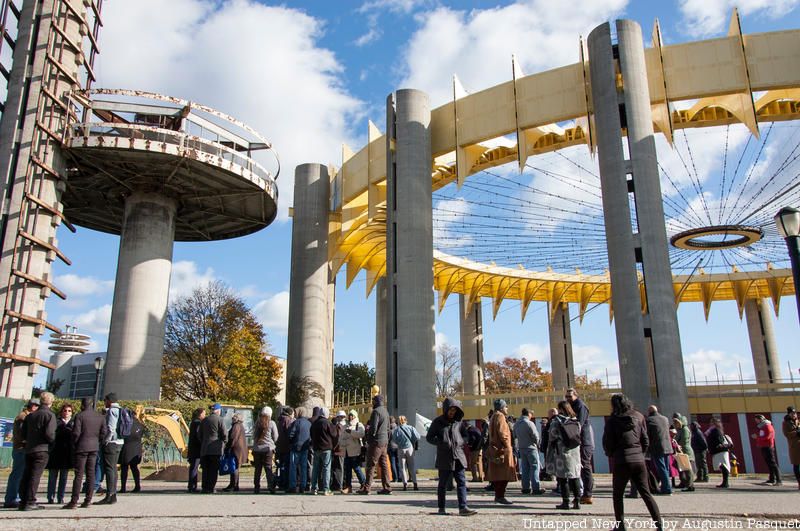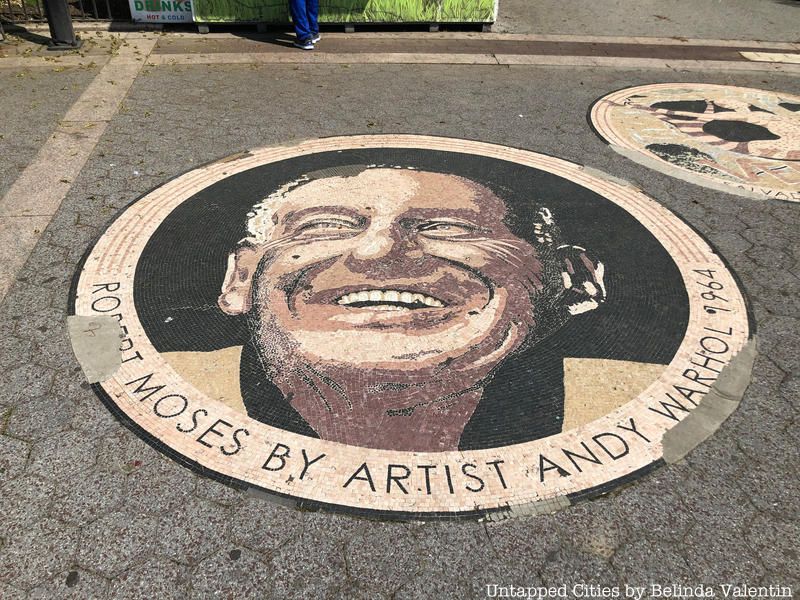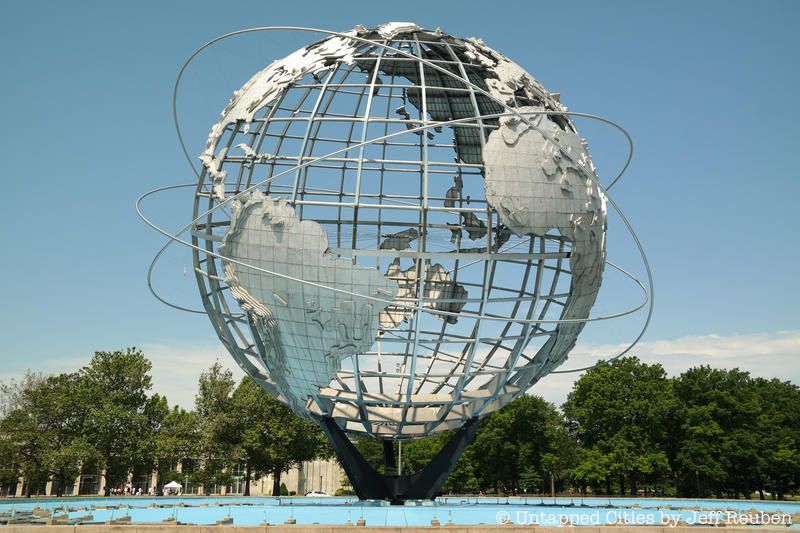A Salvaged Banksy Mural is Now on View in NYC
This unique Banksy mural goes up for auction on May 21st in NYC!


Many New Yorkers have heard of the Unisphere, the visual focal point of the former World’s Fair grounds, today’s Flushing Meadows-Corona Park in Queens. But few bother to ask, what does it represent? Early on the documentary “Between Neighborhoods,” director Seth Fein, a historian and experimental filmmaker, classifies the stainless steel structure commissioned for the 1964 World’s Fair as a “model of a model of the world.” Implicit in that definition is a Russian doll of meaning, a narrative he slowly unpacks across eighty-one minutes of the film, which has recently been made available for rent digitally on Vimeo (you can also purchase it through the embed above).
Fein confronts the viewer with sobering revelations of the World’s Fair’s role in disseminating America’s brand of Cold War imperialism, and the man behind that mission, twentieth-century New York’s “master builder,” Robert Moses. Infamous today for his legacy of bulldozing ethnic neighborhoods such as San Juan Hill to make way for “urban renewal” projects and highways reaching towards Long Island, Fein tells the lesser-know story of Moses’ intention to make the Unisphere, and the Queen’s neighborhoods surrounding it, the center of his Empire of Public Works through propaganda and the privatization of public space.

These revelations may serve to dampen the pleasant, nostalgic memories many Americans who attended the Fair in ’64 hold dear, a perfectly appropriate dose of reality for today’s time. But as you see in the trailer above, the vintage newsreels included in the documentary still satisfy those who wish to relive the feeling of being at the World’s Fair, and pique the interest of those you did not get to go. Fein doesn’t sugarcoat the truth, presenting facts that support his message of just how deeply the wounds inflicted by racial and socioeconomic unjust public policy can cut. On the same note, we can see how the neighborhoods that have sprung up through the decades of struggle have produced the sort of communities and leaders that foster democratic change, such as the Queens-backed election of Alexandria Ocasio-Cortez to U.S. Congress in 2018.
A quick architectural history of the sphere’s construction at the beginning of the film soon progresses to a breakdown of Robert Moses’ ideology as it relates to his urban planning. Moses was greatly influenced views by the anti-Communist modernization thinkers of his day, especially economist Walt Whitman Rostow, a man infamous for defining the stages of economic growth and development that gave us the terms “first and third-world countries.” Moses envisioned the Unisphere as the geographic and symbolic crux of his ambitious road, bridge, and park projects, Queens being a natural choice due to its central location within his metropolitan empire that was stretching from the five boroughs to the suburbs.

The director draws shocking parallels between Moses’ civic works in New York and the transportation modernization projects built in the same era in Latin America, such as the authoritarian-regime backed Pan-American Highway. Fein nevertheless makes a point to note how “history never travels in one direction.” Ironically, as Fein explained, “the failure of the Moses-like infrastructure that Washington imposed on the so-called third world, led to chaos there; meanwhile, immigration from the once-called Third World arrived in Queens since the Fair.”

Unisphere then and now, images from Between Neighborhoods. Left image by Seth Fein, right image from public domain.
The film smartly forgoes voiceover, instead utilizing diegetic sound and text in a split-screen format. Fein combined archival footage from his research about the Fair and about US foreign policy in the Third World alongside original footage he shot in Queens. The effect is artistic, echoing the rhythms of Queens itself. “Between Neighborhoods” is hard-hitting, but also a fond love letter to the world’s most diverse community. A happy consequence of a dark history, Flushing-Meadows Park and the public spaces of Queens have been re-appropriated and turned on its head to better suit the current demographic. To residents, Fein shows, Queens is not an outer borough but a central locality of a life lived. One of Fein’s final notes, especially poignant in pandemic times, leaves the viewer ruminating alongside the ubiquitous strains of a city ice cream truck: “People defy planners to make public space.”

In an interview with Untapped New York, Fein ruminates on Queens in the present-day as it became the global epicenter of the COVID-19 pandemic: “Just as technology could not stop, and in fact spread the coronavirus, immigration has remade our still-miscalled outer boroughs as the cosmopolitan center of New York City itself, not Moses’s easement to the suburbs, as “Between Neighborhoods” shows. I hope that “Between Neighborhoods” can at this moment help provoke critical thinking about the contemporary geography of NYC and the central, inner borough (yes inner) place of Queens, especially around the Unisphere, for cross-cultural interventions to preserve the economic and social fabric of this area for the benefit of the entire city.”
Fein has another upcoming art documentary underway, “Small Kitchens,” which, as he explains, “examines kitchen work by intercutting between a Nepali restaurant and a Mexican food cart, between Elmhurst and Jackson Heights.” Visit his website, sevenlocalfilm.com to read more about his Queens-based film company and see the full documentary Between Neighborhoods.
For more on the World’s Fairs, join us for the virtual book launch next week of the novel We Came Here to Shine with author Susie Orman Schnall!
Subscribe to our newsletter